NASCAR may have been founded around moonshine, but those early days of running “white lightning” are long gone. Nowadays, auto enthusiasts prefer to run a different kind of shine, and unlike those hot-rodding bootleggers, this stuff won’t force you to run from the fuzz.
Homemade DIY alternatives are as numerous as crashes at Talladega, and nowhere is this more apparent than in the world of car detailing, with liquid car detailing solutions leading the pack. So is it possible to concoct homemade tire shine with a bunch of random ingredients you’ve got lying around the house? It’s not like you have to worry about a peeling clear coat or hard water spots when caring for tires. So why not get play “mad scientist,” and mix-up a potent shine of some sort?
Now before we get too “antsy in the pantsy” over talking tire shine, let’s get one thing straight: There’s a reason why the tire dressing business is so fucking profitable. For decades, the world’s wealthiest chemical companies have spent an asinine amount of cheddar on researching and testing tire shine products, just to guarantee that they work.
That being said, please don’t get all hot under the collar when your homemade tire shine solution isn’t lasting nearly as long, or bringing the thunder like a $1 billion dollar investment from 3M. You are here because your cheap ass is trying to make due with what you’ve got, and you’re curious to see if all those post-apocalyptic survival supplies you’ve been hording in your auntie’s garage will cut the kimchi.
Well fear not good citizen! The following three, relatively decent, super simple homemade tire shine recipes are here to make your quest for frugality a reality. While we’re at it, I guess we might as well address some of the common issues associated with homemade solutions of this caliber, and maybe even throw in a brief FAQ section, just for shits-and-giggles. Onwards!
3 of the Best Homemade DIY Tire Shine Solutions
While a lot of people have their own homemade tire shine recipe (tortoise saliva and turpentine anyone?), the following three oddball entries are generally accepted as the best, and safest solutions.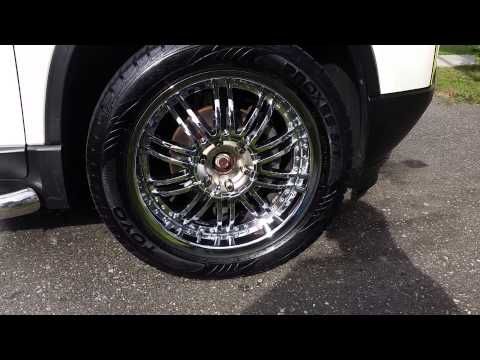 However, just to err on the side of caution, we strongly suggest using protective gear such as nitrile gloves and eye protection when concocting an automotive “tincture” on one’s own. The last thing we want is for you to end up in the hospital because you just discovered that you are allergic to any combination of the following ingredients.
However, just to err on the side of caution, we strongly suggest using protective gear such as nitrile gloves and eye protection when concocting an automotive “tincture” on one’s own. The last thing we want is for you to end up in the hospital because you just discovered that you are allergic to any combination of the following ingredients.
It may sound like a frilly Hipster highball, but when you combine castor oil and alcohol with a little auto shampoo and water, the natural shine of the rubber and synthetic materials contained within modern tire compounds really pops. Here is what you’ll need to make this oddball “cocktail.”
To whip-up this magical mixture, you’ll first blend the automotive shampoo and water to wash the tire.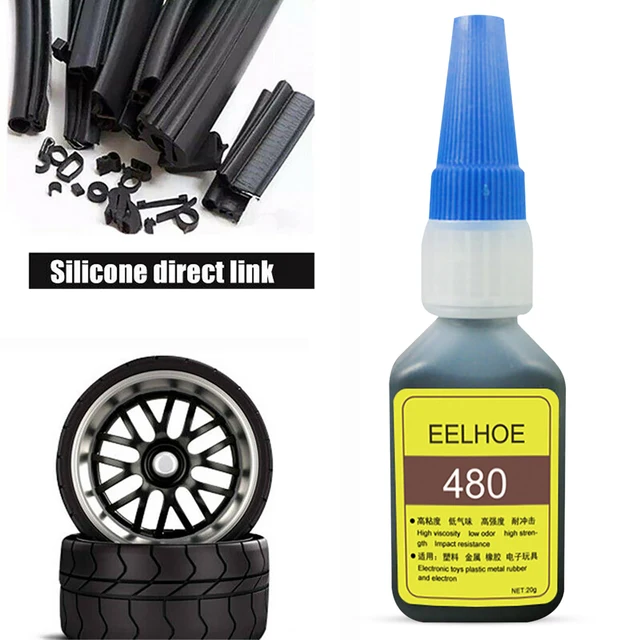 Use a tire brush to get into all of those little grooves and textured surfaces on the outer sidewall.
Use a tire brush to get into all of those little grooves and textured surfaces on the outer sidewall.
After scrubbing the rubber, use some rubbing alcohol to further clean the tire. The alcohol essentially acts as an extra step to further remove contaminants from the tire’s sidewall, and should be used sparingly, as it can dry out rubber rather quickly. A modest splash of rubbing alcohol on a microfiber towel or applicator pad will be all that is needed to wipe the entire tire clean.
Once the tire has dried, splash some castor oil on a different microfiber towel or applicator pad, and hit every square centimeter of the tire’s sidewall in a circular motion until a sheen can be seen from every angle.
Out of all of the products on today’s list of homemade tire shine formulas, baby oil has to be the cheapest and slipperiest. Not only does this slick mineral and aloe-based oil add insane amounts of shine to anything it touches, but the infusion of Vitamin E has caused it to become prized for its ability to nourish cracked and drying surfaces, and that includes automotive rubber.
Here is what you’ll need:
First, pour the 1/2 cup of water into a bucket, add the baby oil, and mix with three drops of automotive shampoo. Pour the solution into a spray bottle and shake it up. Spray the homemade tire shine directly onto the tire , as well as onto a clean microfiber towel. Once the tire is completely covered and slick-looking, allow the solution to sit for a minute or two before wiping it away with a separate microfiber cloth.
While the smell of burning rubber may excite fans of drag racing, most people abhor this pungent automotive aroma.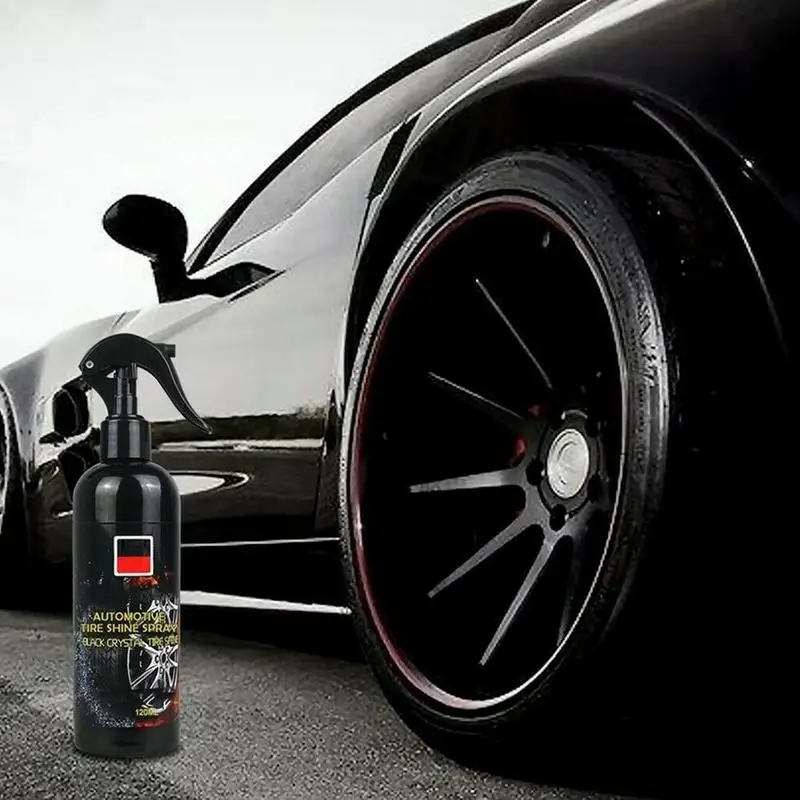 Try laying a citrusy smackdown on UV damage and cruddy contaminants with the dry-rot-reducing power of a lemon oil tire dressing solution. When blended properly, this concoction acts as both cleaner and conditioner.
Try laying a citrusy smackdown on UV damage and cruddy contaminants with the dry-rot-reducing power of a lemon oil tire dressing solution. When blended properly, this concoction acts as both cleaner and conditioner.
First, pour the automotive shampoo into a bucket and then add the water along with the Borax. Stir the concoction until fully mixed, adding the lemon oil last. Once fully blended, dip the brush in the solution and clean the tire, reapplying fresh amounts of solution as necessary. Rubber thoroughly scrubbed, break out a clean microfiber towel and conduct a final, dry wipe down.
A Few Other “Unique” Homemade Tire Shine OptionsNaturally, there are a ton of other homemade tire shine options out there, most of which rely upon common household products.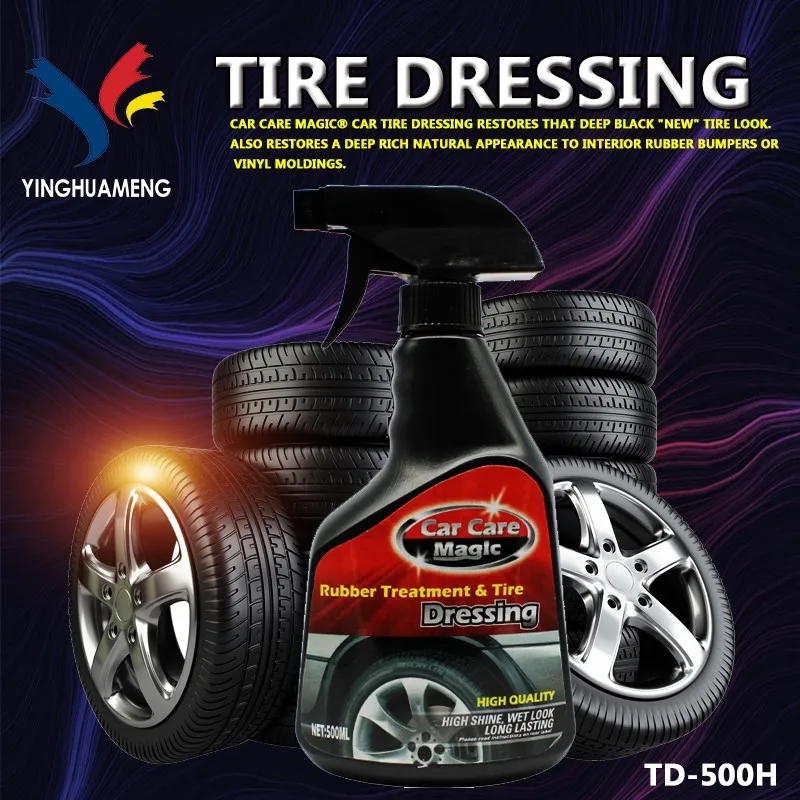 The issue, is that from a shiny tire’s viewpoint, most of these ingredients really aren’t all that great when it comes to durability and visual appeal. So take the attached video with a glob of grease, because the aforementioned DIY tire shine solutions are about as good as it gets.
The issue, is that from a shiny tire’s viewpoint, most of these ingredients really aren’t all that great when it comes to durability and visual appeal. So take the attached video with a glob of grease, because the aforementioned DIY tire shine solutions are about as good as it gets.
In order to help you remember the core components of routine tire care, we suggest following the classic T.I.R.E. acronym, for it still rings true today. This will not only help keep those sidewalls looking spiffy, but potentially prolong the life of the tire compounds themselves, and therefore make your windshield time all the more safe.
“T” is for TIDYThe easiest way for someone to keep their tires in good shape, is to clean them regularly. Washing away tire contaminants like grime, brake dust, pollution, and road salt helps remove the risk of this crud embedding into the rubber.
Washing away tire contaminants like grime, brake dust, pollution, and road salt helps remove the risk of this crud embedding into the rubber.
By keeping your tires tidy, and routinely applying a protectant, contaminants and UV rays alike become far less of an issue, as both are the core cause behind premature cracking and blowouts.
“I” is for INSPECT The old “penny test” may be a proven method for testing tread depth, but on many tire compounds this means you have reached a dangerously low level of grip. The top of Lincoln’s head on the US penny measures about 2/32nd’s of an inch, which traditionally means it’s time to replace a tire. Don’t wait until your tires reach this level, because your traction at this point will likely border on being dangerous.Automotive tires should undergo monthly maintenance checks, especially when routinely driven. This includes checking tire pressure levels, which should be done every other week, especially since these numbers fluctuate when there are dramatic changes in ambient air temperature.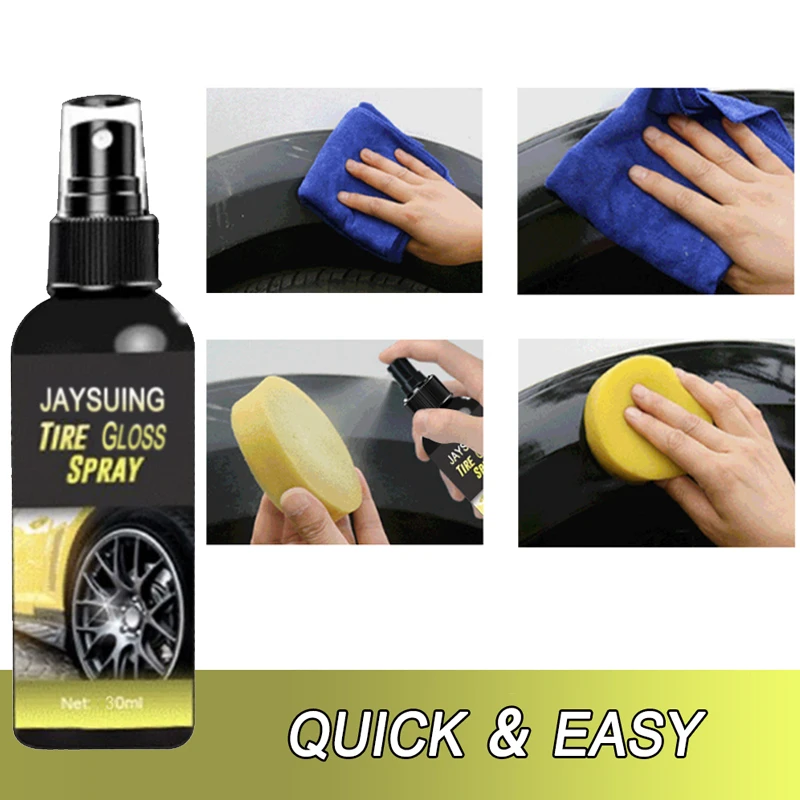
Inspecting tires for cracks, bubbles, or odd wear patterns should also be a routine, with a monthly, or bi-monthly basis being the norm. This will not only help you keep an eye on the condition of the tire compounds themselves, but by detecting uneven or unusual treadwear patterns, you will shine a spotlight on any suspension alignment issues. There is also the issue of improper tire inflation, which can lead to premature wear and potential blowouts.
“R” is for REPLACEMany car owners assume that if there is more than 2/32nd tread depth left on a tire, they’ll be totally fine. This is one of those outdated, shade-tree mechanic recommendations. By the time a tire’s tread pattern has worn this low, traction will have been reduced to a dangerously low point. Play it safe, and replace your tires when the rubber reaches Lincoln’s forehead on the US penny.
“E” is for EASY For those of you who are unfamiliar with tire lingo, this guide will help explain what all the numbers and letters on the sidewall of a tire means.
Having the right tires on your vehicle is just as crucial as routinely inspecting and maintaining them with a tire dressing cleaner. Keeping an adequate load weight, and not exceeding the tire’s maximum capacity is a core way to maintain tire integrity, as is ordering the appropriate tire size.
Overloading a vehicle, or specific areas of a vehicle (like the trunk or truck bed), puts a ton of strain on tires, as every tire compound on the planet comes pre-engineered to withstand a certain amount of pressure. So shop wisely, and know that any tires with the letters “XL” on their sidewall won’t be “extra large,” but strong enough to hold extra air, thus allowing them to carry “extra loads.”
Quick Tip: Don’t forget to check your spare tire every month. Nothing is worse than having a flat tire, and realizing that the doughnut is also low on air or damaged in some way.
Parting ShotsDry rotting tires or tire sidewall cracks are a commonplace, and often avoidable tire malady.While these homemade tire shine solutions are rather good at improving appearances and protecting sidewalls, extending longevity really boils down to protection, not enhancement. That is why the lemon oil shine option remains the preferred homemade method for accomplishing this vital step.
Just remember, automotive tire care is more than just applying a product or some homemade solution to a piece of rubber. In order to safely enjoy the joys of the open road, one must first inspect and then protect their tires. This rubberized consumable product is the only part of the vehicle that comes into contact with the ground. So take good care of these rolling pieces of rubber, and they will take care of you…
Priscilla February 23, 2020 Tips Leave a comment 2,971 Views
No one likes a dull tire, but do you know that shine tire doesn’t cost if you use the right formulation? You can prepare a homemade tire solution without spending a penny.
You have finally been able to lay your hands on that gleaming car you’ve always wanted. It’s yours now. But it’s just a few miles that give your tires a very shabby look. It’s such an eyesore! Suddenly your new car seems to have lost much of its appeal. Those admiring glances from your neighbors and passersby are gone too.
Our instructions will help you shine your tires like a true professional. You can use stuff easily available in your house that’ll help you save a lot of money. We are here to get your tires shining again using only a few ingredients readily available in your house to prepare a perfect homemade tire shine. What’s more, you can have them in no time at all. Before you get started, here’s a word of caution. Make sure that you protect yourself with nitrile gloves and do use protection for your eyes before you blend the ingredients.
So, today, we are going to show you how to prepare a homemade tire shine at your home only with these simple tips.
This is an effective yet cheap homemade tire shine ingredient. Your car tire is pampered like a baby when you wash it with baby oil. We say pamper as baby oil has no harmful chemicals and is made from natural ingredients. It’s really great for shining your tires, just perfect for your gleaming new car.
You Shall Need
The Method
This mixture is just great if you’re looking for an inexpensive way to clean your tires. It’s the perfect homemade tire shine for you! What’s more, it lasts for a few months too! That gives you the chance to clean your tires every week making them look brand new for years.
Disgusting as it may taste, Castor oil makes for a really good homemade tire shine when mixed with alcohol. It’s really effective when it comes to shining your tires.
You Shall Need
The Method
We advise you to use a homemade tire shine more like a rubber conditioner. This will protect it from the wear and tear and dry rotting caused by the sun’s UV rays and other contaminants. Lemon Oil is the right ingredient for this kind of tire shine, a rubber conditioner. It also acts as a tire wax and protects the sidewall of the tires.
You Shall Need
The Method
Read also: Safety driving tips for truck driver
This is yet another great recipe for squeaky clean tires. Not only does it make the tires shine, it extends their life too. It also helps protect them from UV rays.
Things you will need
The Method
While these are the best tire shine formulation being inexpensive and efficient at the same time, we have some other ingredients too that are good for shining your tire.
You are sure to have a great shine on your tire, just right for your new car when you apply these on your car tires and leave them for a little while.
Things to Remember While using Tire Shine Solution
Conclusion
Taking good care of your car tires gives them a longer life. The tires are more dependable too and have a better grip. The tire shines not only clean your tires, but they also don’t let them degrade. That helps keep your car tires in good shape much longer. Remember, the intention is not just to make the tires look great; they should also be protected for longer life. It’s Lemon Oil that best helps protect your car tires. We hope you find our article on how to make homemade tire shine useful. We feel they are just right for the clean tires that your gleaming new car will look great with. Do share your feedback with us. Goodbye for now!
Previous Sarjak Container Lines Tracking Online & Contact Number
Next Truck Driving Schools In Oklahoma
A Full Truck Load (FTL) simply means that the truck will be used to ship …
0003Related materials
5 cool and inexpensive Chinese car ideas for autumn
You don't have to go to a car wash or a spare parts store to get your tires back to a deep black color. You can get by with improvised means, and some of them are sure to be found in almost every home.
There are several ways to blacken tires that are safe and do not affect traction. In the absence of special means for restoring color, for example, shoe polish, glycerin, silicone oil, and even laundry soap and household chemicals are used. Each substance has its pros and cons, but it should be remembered that none of them fully possesses the qualities inherent in special solutions: neither long-term effect, nor protective properties, nor ease of use.
Related materials
11 factors that the driver needs to remember in the fall
Blackening tires with shoe polish or other shoe care product is the first thing that comes to mind. At the same time, the processing process itself is no different, only instead of a brush it is better to use a sponge so that splashes of shoe polish do not stain the body. We simply rub the sidewall of the washed and dried tire with shoe polish and let it dry.
To be honest, the result does not look very good, even when using the product with wax: there is neither shine nor color depth. The application process itself is also inconvenient - imagine what it would be like to process four wheels. The downside is that you have to wait for the shoe polish to dry completely before driving. Otherwise, road dust will quickly stick to the treated surface, reducing all the efforts made to nothing. Of course, there are also quick-drying paint creams, but their cost is such that it will still be cheaper to buy a special product for blackening tires.
Due to its consistency, glycerin creates a stunning jet-black shiny tire effect, and the degree of "greatness" can be adjusted by diluting the product with plain water. For one procedure, only one hundred grams of glycerin and the same amount of water are enough. We mix them, taking into account the fact that the less water in the composition, the more "fat" the effect will be. But it’s better not to spare water, otherwise dust will stick to the tires, as in the case of wet shoe polish. The composition is applied with a simple sponge without rubbing. By the way, unpainted black plastic body parts can also be processed with this composition.
The advantage of this method is its low cost and the availability of glycerin in any pharmacy. The disadvantages overlap all the advantages: glycerin quickly ages rubber, causing it to crack. In addition, the composition is very well washed off with water - the very first rain or driving through a puddle will not leave a trace of glycerin. In dry weather, tires will only stay black for a couple of days.
Related materials
How to sit behind the wheel - check your fit
Blackening tires with silicone oil is not the cheapest way because it is not sold in small containers and you will have to buy an annual supply of funds right away. This method is the simplest, most efficient and less labor-intensive than the others. It is better to use medium viscosity oil, which will also come in handy for treating tires before winter or summer storage - this is the only substance described that somehow protects rubber from cracking, drying out, ultraviolet radiation and moisture.
The effect after treatment with silicone oil is long-lasting and the tires look blacker than new. Silicone oil is also treated with door seals and trunk lids so that they do not freeze.
Laundry soap is perhaps the cheapest product suitable for blackening tires. It can be applied with a pre-soaped brush, or by dissolving a crumb of soap in water, apply the composition with a sponge. There is no need to rinse off the soap: when it dries, the rubber will acquire a beautiful and deep black tint. Like most artisanal methods, blackening tires with laundry soap has its drawbacks. Rubber because of it, as in the case of glycerin, ages faster and may begin to crack, so we do not recommend this method of blackening.
Related materials
Preparing the car for winter: what needs to be done first
Household chemicals are often used in car washes. This is a cheap, effective and harmless method for rubber and its adhesion to an expensive method, which can be offered as a bonus or "gift". It is mainly used for washing glasses, as well as dishes. The first is sprayed onto the sidewall of the tire and rubbed quickly, while the second is applied with a damp sponge. It is not necessary to wash off the compositions.
Also on the forums it is advised to blacken tires with drinks. More often than others, Coca-Cola is mentioned. But because of the sugar in the composition of the cola, it creates a sticky layer, on which dust quickly settles, and is easily washed off in the first puddle.
***
All of the listed products, of course, are inferior to the special compounds sold in auto chemical departments. Their blackening effect is short-lived and does not look so beautiful. In addition, most of them can harm rubber by affecting its chemical composition and reducing its service life. Nevertheless, the described methods are in demand due to their availability and spontaneity, because most motorists do not need to blacken tires every day.
However, the safest alternatives to professional tire blackeners are silicone and household chemicals. The latter is usually also cheaper.
Photo: depositphotos.com
Our new video
The inconspicuous hero GAZ-63: why was this all-terrain vehicle better than foreign analogues?
How to turn a truck into an SUV - a good old recipe from the USSR
Moskvich 3 on the tests "Behind the wheel": we traveled with both the manual gearbox and the CVT
Like the article? Subscribe and you will always be in the know!
Driving in Zen
News smi2. ru
In this article, we will analyze with you three ways to blacken rubber and why it is needed, as well as how often these methods can be used and how this can be done at home and without much effort. Most often, blackening agents are not very cheap, and the purchase of this drug costs a pretty penny. And in this article, we will tell you how you can save money and keep the color of your car's tires vibrant.
When you use a car, the wheels suffer the most. It all depends on rough roads, salts and chemicals and other factors. And it is because of this that the rubber loses its original appearance.
You don't need to spend money on buying new tires to get your old tires back. For this there is a blackening of rubber. This is an effective procedure that gives the tires their original black color. Also, blackening of rubber can be done at home.
In addition to the original black color, these methods will give the rubber protective properties. The tires will have a protective silicone layer. This will protect them from dirt and dust and cracking. Basically, tire blackening is used before a solemn holiday, for example, a wedding.
You can apply tire blackening every day, depending on which method you choose. Sometimes there are costly means of blackening wheels. It is best to do this procedure when the color begins to fade. Be sure to treat tires in this way before seasonal storage. Modern rubber is susceptible to cracking under normal conditions. But the methods that will be discussed later will save your rubber, and give the tires a rich black color.
Tire blackener can be used to fix the tires on your car and do it yourself. Blackening of rubber should be carried out after washing the car. And in this section, we will tell you in what three ways you can restore the black color of your tires.
This method is mainly used in workshops. But you can make it at home Many motorists are wondering what is the best way to blacken the rubber on the car and not harm the tires.
For example, Turtle Wax . This is a black gloss that improves the color of the tires and prevents them from drying out, cracking and discoloration. Tires acquire a permanent color, a protective coating and prevent pollution and dust that settles on the surface of the rubber.
The benefits of this preparation are as follows:
1. Prevents dust and road grime from settling;
2. Water and mud run off the tire surface due to its hydrophobic properties;
3. Spray pack.
The method of application is very simple. A wheel blackening agent is applied to the side surface of the tires and left for 10 minutes until completely dry. You do not need to wipe the tires after this.
This method is used in the army for rubbing the tires of trucks or military vehicles. Gutalin is not the kind of tool that should be blackened with rubber on a car. This product will certainly make tires bright black, but it will dry out the tires and shorten their lifespan.
How to use
Shoe polish is poured into an iron bowl, filled with solvent and heated to a boil. After that, it is applied to the tires with a brush and we wipe our hands with a solvent from the product. The wheels become like new, but this is enough for one trip.
The next way to blacken rubber is considered a folk method and this is glycerin. This tire ink does not contain dyes like shoe polish.
The product is poured into water in a ratio of 1:1 to 1:5.
It all depends on the criteria for your type of rubber. A solution of glycerin and water can be poured into a spray bottle. This type of blackening of rubber is no worse than purchased car chemicals, because they also include glycerin. Some motorists do not want to use rubber blackeners, including those made by themselves, just because of glycerin.
Basically, there are two types of rubber - oil or petrol resistant and regular. And the gaskets in the engine don't react with glycerin at all. Tires that are made of ordinary rubber, when in contact with glycerin, do not deteriorate and significantly affect the appearance and operation of the rubber.